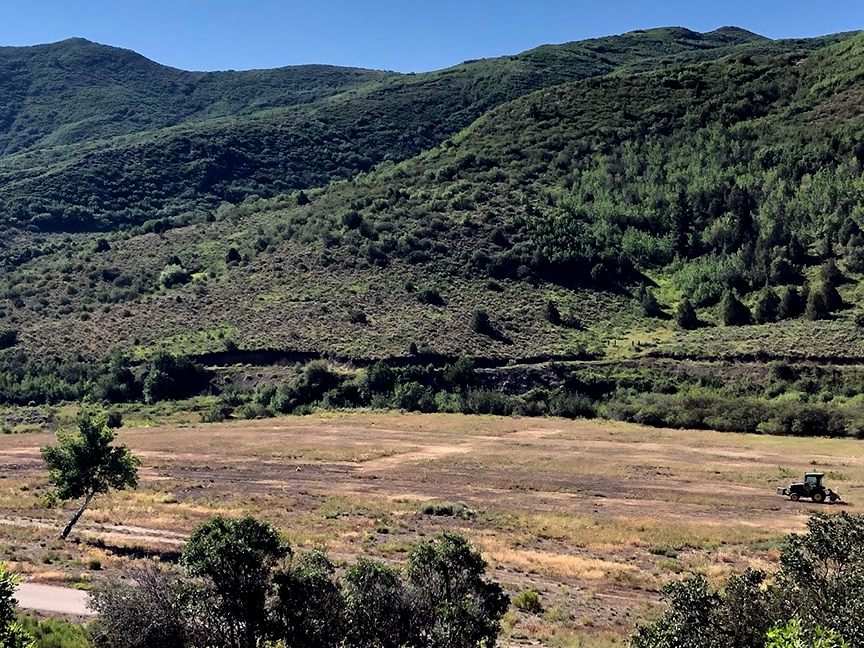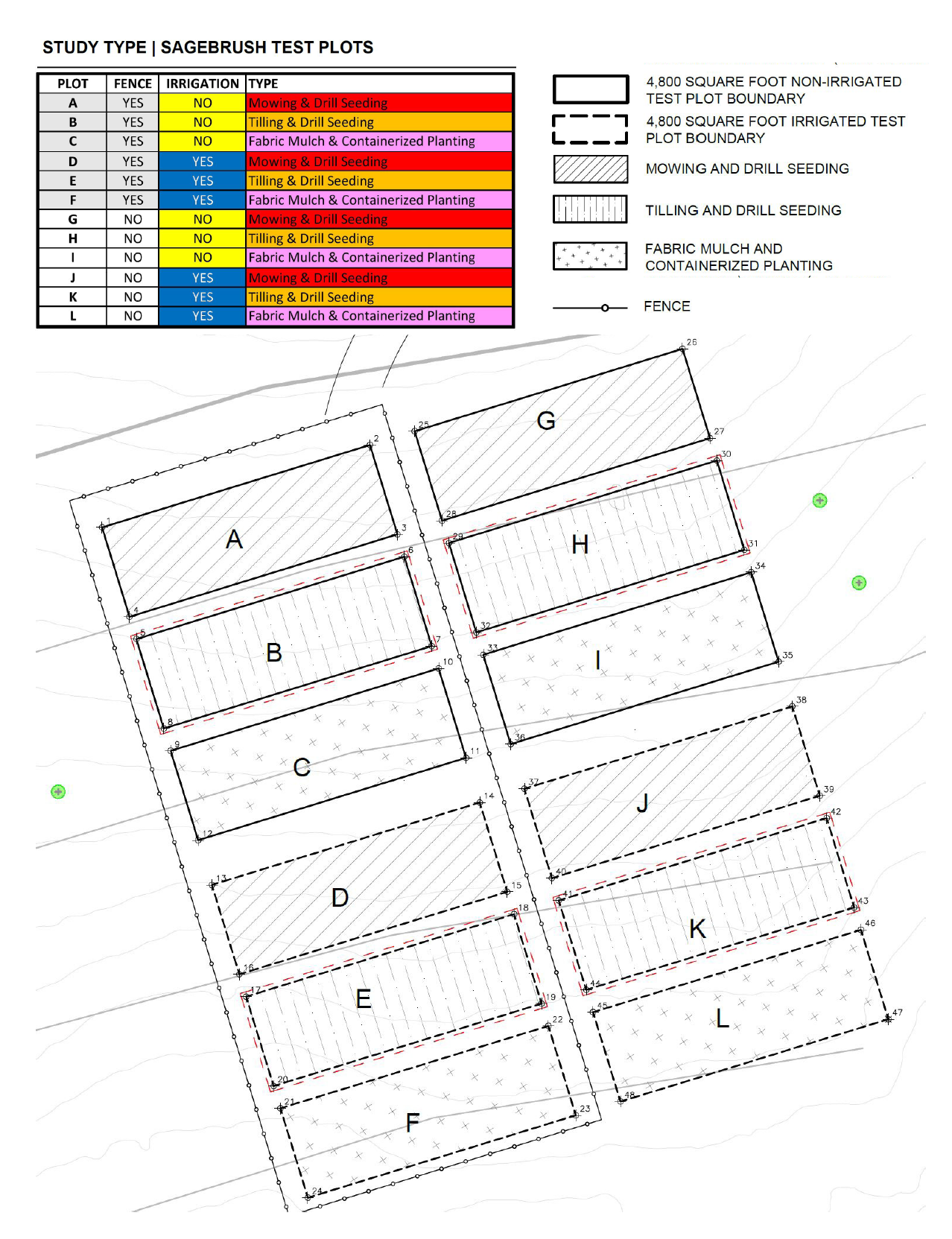OST begins field testing on sagebrush restoration

Sagebrush test plots in the Brush Creek Valley.
Throughout the West, and in Pitkin County’s backyard, sagebrush shrublands have been lost, fragmented and altered by human activity. Getting them back isn’t easy, but Open Space and Trails has launched a study of potential methods to regenerate native sagebrush with the goal of restoring sagebrush on larger landscapes.
Sagebrush habitats support a unique biodiversity. In Pitkin County, sagebrush-dependent species include Brewer’s sparrow (Spizella breweri) and green-tailed towhee (Pipilo chlorurus). Sagebrush is also an important forage species for our wintering elk and mule deer. As Open Space and Trails endeavors to enhance local biodiversity and ecological resilience in the Roaring Fork Watershed, we continue to work on protection and restoration of sagebrush shrublands.
The portion of Sky Mountain Park located between Brush Creek and Brush Creek Road is an old agricultural field now dominated by non-native grasses and weeds, though it was historically dominated by sagebrush. The area is now the focus of a sagebrush restoration study that will begin to unfold this year and next, and last for several years. The overall goal of the study is to determine a successful restoration strategy that can be applied to the entire field and to other open space properties as warranted in the future.
In sagebrush restoration projects, plant competition between sagebrush seed or seedlings and the existing non-native grasses and weeds is the crux. Many restoration efforts on both public and private lands across the West employ the use of a broad-spectrum herbicide (or chemical fallow) that kills all existing vegetation prior to sagebrush seeding. OST is committed to reducing the use of chemical herbicides when possible, and our environmental concerns about extensive use of herbicides on a large area like the 9-acre hayfield at Sky Mountain Park have led us down a different path.
OST has been working with ecological consultants to develop a series of plots that will help us test and evaluate the most effective method to restore local sagebrush shrublands without the extensive use of herbicides, for the benefit of wildlife, pollinators and the promotion of ecosystem resiliency.
The team (OST, DHM, Colorado Wildlife Science and Peak Ecological) has developed a study design that includes a suite of treatment options that will be field tested over the coming years. The design is based on extensive research, interviews with researchers and practitioners, literature reviews and analysis for feasibility and scalability. Three different strategies for reducing plant competition (without herbicides) and planting/seeding sagebrush will be tested. They are:
- Mowing, followed by drill seeding (mechanically planting seeds at a uniform depth and spacing)
- Tilling, followed by drill seeding
- Biodegradable fabric mulching, followed by containerized planting
The study incorporates irrigation and fencing (to protect young plants from wildlife) as additional variables that will be tested. The resulting design is a layout of 12 plots to test each of the three planting strategies with various combinations of fencing and irrigation (see design below). Feasibility and applicability to other parcels of various sizes is a major component of this study, as we seek to determine the best methods to implement restoration across the rest of this field, and also in more remote areas where irrigation and fencing may be unavailable.
Sagebrush is much more sensitive than other shrub species, so the use of locally adapted seed is another key component to successful sagebrush restoration. Seeds that are adapted to Pitkin County’s microclimate and elevation are not commercially available, so OST is currently exploring options to collect local seed from sagebrush populations adjacent to or near Sky Mountain Park. Stay tuned to watch the progress of this study, and to join us in a sagebrush seed collection effort this fall if conditions are right and we need your help!
Other work you might see along Brush Creek Road this fall is part of the Brush Creek ponds restoration project, helping re-establish effective riparian habitat along the creek where the old irrigation ponds have sat unused for years. Details on that project coming next month!
– By Pitkin County Open Space and Trails

